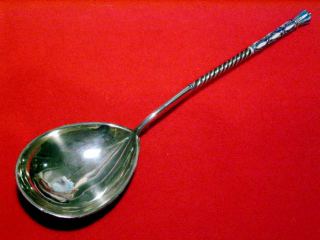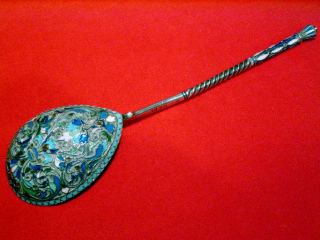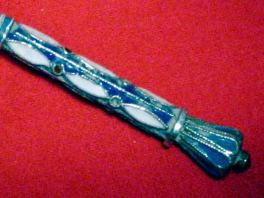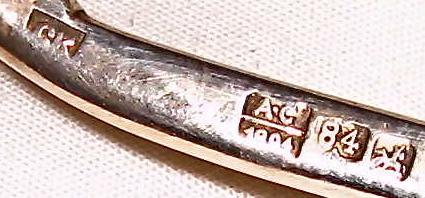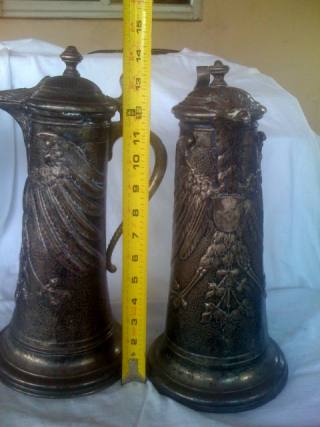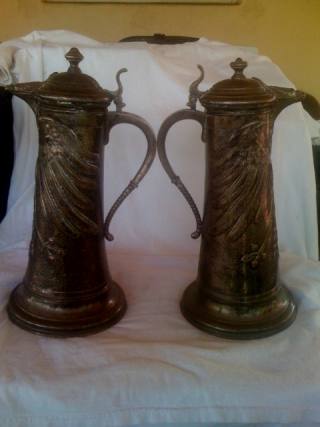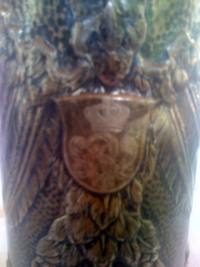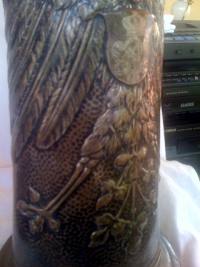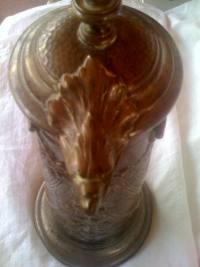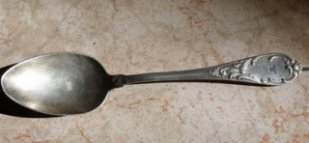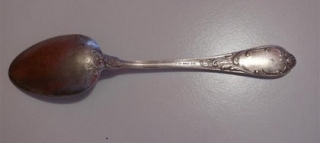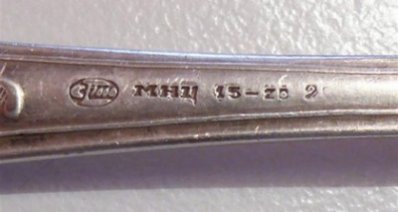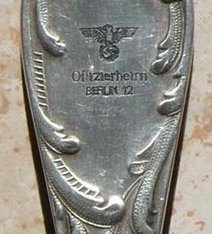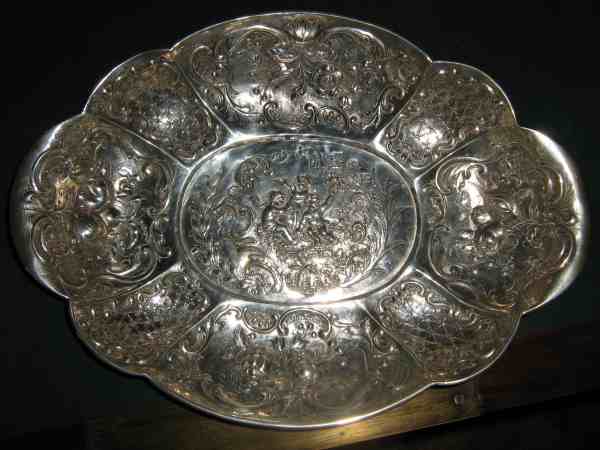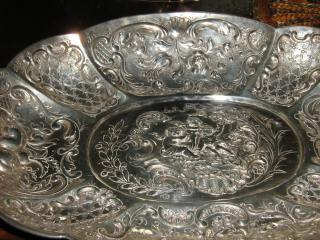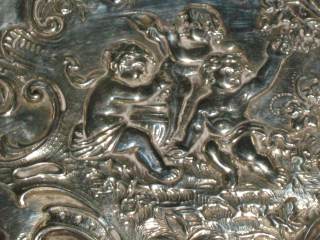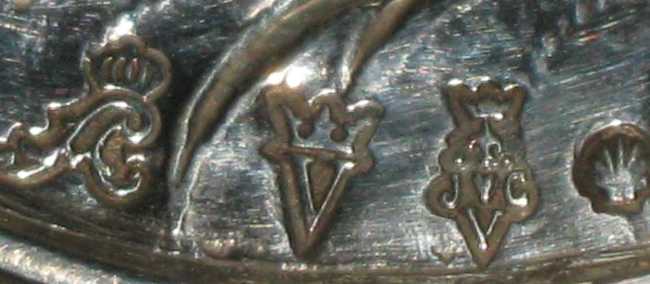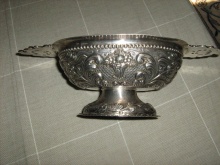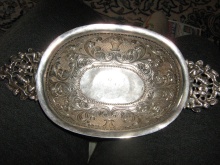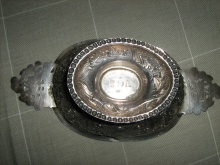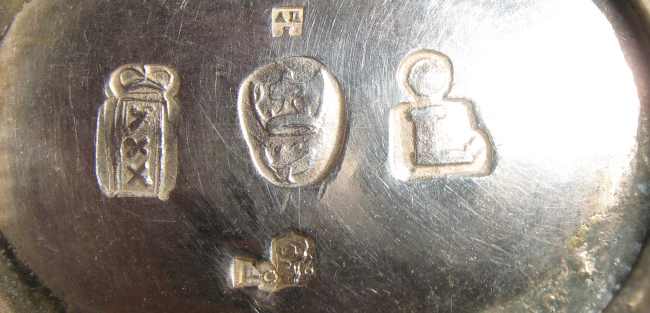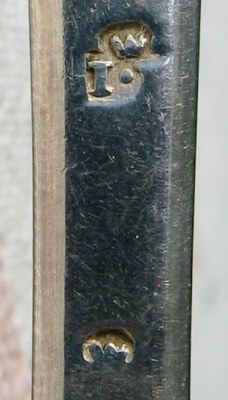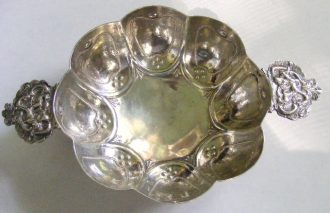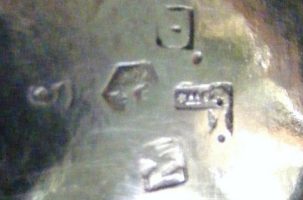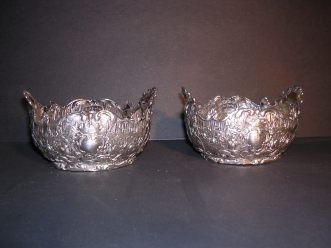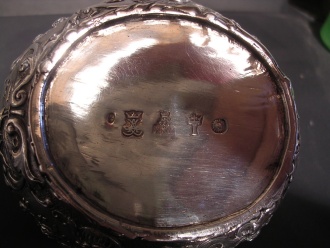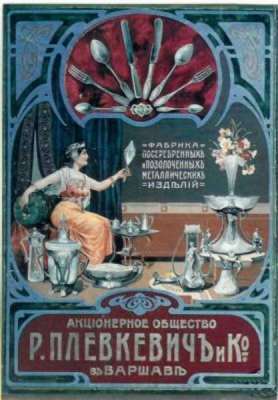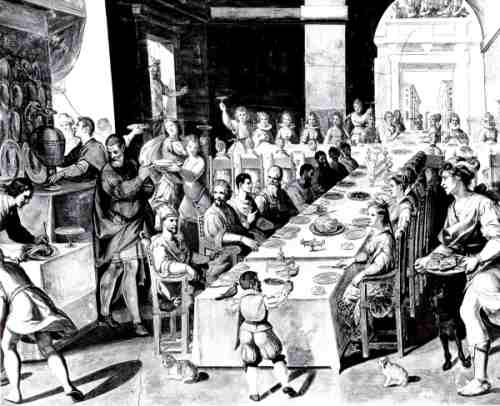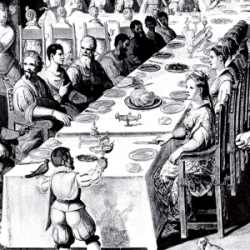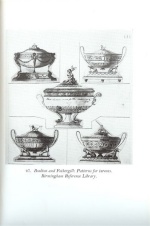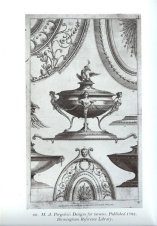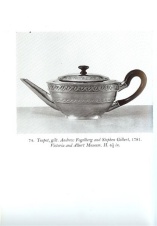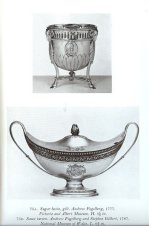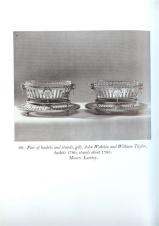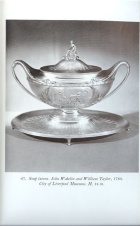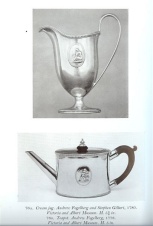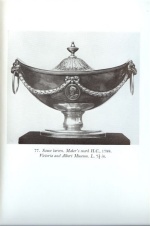 newsletter # 51 - AUGUST 2008
newsletter # 51 - AUGUST 2008www.ASCASonline.org
email: silverassociation@yahoo.it
YOUR GUIDE TO AUGUST NEWSLETTER:
articles new members
members' window
|
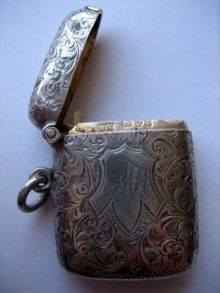
Robert Massart presents: |
New members
Welcome to new ASCAS members:
Linda Dempsey - USA
Michael Deshaies - USA
Sebastiano Gardoni - Italy - Brazil
Richard Hyman - USA
Andrew Lawton - Australia
Dee M... - USA
Andrew Morrish - England UK
David Nikogosyan - Ireland
Alexander Rose - USA
Bram Sonneveld - The Netherlands
Bill Whittaker - USA
Members' Window # 51
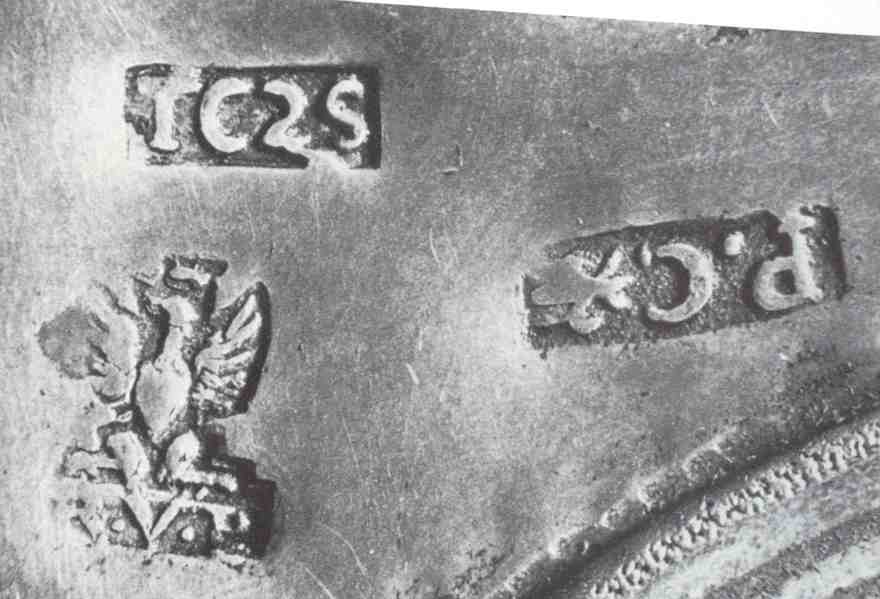
|
Mail to ASCAS: e-mail silverassociation@yahoo.it
Dominique Mayeux writes:
... with the help of www.silvercollection.it I was able to
identify some of the marks of my spoon. If I'm not wrong
- St George for Moscow 1892
- 84 for silver quality 84 zol. = 875/1000
- A.C for Aleksandr Alekseevich Smirnov (assayer)
- 1894 as for date of manufacturing
- BUT ... who is this "silversmith CK" ???
I found this "plique à jour" in Cairo
My thanks to who may tell me the utility of this spoon
- sugar ?
- caviar ?
- item of display/decorative ?
Best regards
Dominique Mayeux
The maker is Syemyen Kazakov, active in Moscow 1889/1908.
In my opinion these spoons were only decorative objects
By the way; I believe that your spoon has a "cloisonné" and not
"plique-à-jour" decoration.
Cloisonné is a type of decoration obtained using enamel on a
metal base in which the design is outlined by metal fillets (cloisons
in French) secured to the metal (ref: Dictionary of Silverware).
The plique-à-jour technique is designed to produce an effect of
a stained-glass window in miniature through the use of
translucent enamels. The technique is exactly the same as
cloisonné enamelling except that the strips of metal forming the
cells are only temporarily attached-not soldered-to a metal base
to which the enamel will not stick (ref: Britannica).
Giorgio Busetto
Journe Y. writes:
...I was trying to find out information on 2 items I got,
but not sure what they might be worth...
They are 800 silver by Otto Schneider and came from Germany.
They are 2 identical tankards with the lid is the Head of an
Eagle, and the rest of the body goes down the tanker. They have
German letters and a name you can read. One of them has "55th Inf Brigade Kaiser Wilhelm 1 No110".
They had a letter inside where
it read to her daughter that she got the tankards in an attic in
1946 in the former headquarter building in Hidedelberg Germany
that was being occupied by the U.S third army staff.
I have a few pics if you might have seen something like this
before...thank you for any information you can give me.
Journe
Marcos Sartirana writes:
...... I enclose the images of a spoon I have. Any information
would be highly appreciated. Marcos Sartirana, (2-1-1978)
The marks of your spoon were identified by Geldolph Everts
as "Soviet Russia" (see June 2008 Newsletter). The oddity is the
well identifiable German symbol inscribed on the handle
Giorgio Busetto
Sebastiano Gardoni writes:
... I need your help to identify the marks of this silver
sweetmeat dish (I believe it was made in Paris, 1760 c.)
... and on this Dutch bowl (bearing also London 1903 import marks)
Thank you for any help you can supply.
Sebastiano Gardoni
Svein Solhjell writes:
... I have purchased this silver fork in Sweden, but I believe
it is of foreign origin. I guess it is French based on the
design, but this is only a guess. A crowned coat-of-arms on what
is to day the back, has been (almost) wiped off and a new
initial replaced it.
The maker's mark has a star on top and below first an "I" and
then a dot and then perhaps a second "I", but this is unclear.
No country or town marks.
Can you help me with the identification?
Best regards
Svein Solhjell
Replies to questions
| Josephine
Lewis receives this reply about her silver "quaich"
( see July Newsletter) Janjaap Luijt writes: ... Although the marks are not well readable, I
recognize the Dutch lion in the middle and one mark as a
makers mark (something W*). The other four marks are
pseudo-marks. Perhaps Josephine is able to find two
other marks in the decorations on the handles.
|
|
Patricia Lozano receives this reply about her
Sheffield candlesticks
( see July 2008 Newsletter) Lloyd Prator writes: ...I look all through Jacksons and Culme,
and found no FE mark that looked right. However,
I have a book from the Sheffield Library,
written by Jacqueline Richardson, the librarian,
in 1997. In that book, she lists a similar mark
as an early mark of Frederick Elkington.
Elkington later became a notable Birmingham
smith.
|
|
Susan Harley
receives this reply about her silver
pieces
( see July 2008 Newsletter) Christophe Ginter writes: ... Actually, the marks are not
fancy ones from Hanau or anywhere else.
|
Wulich
Bronia supplies the translation
of Russian text of R.PLEVKEVICH
& CO advertising on " A Page per
Month" in
June 2008 Newsletter
"A PAGE per MONTH"In
this column we present a page
obtained from makers' brochures,
books, auction catalogs,
advertising or whatever other
printed paper related to silver,
which may be of interest for
ASCAS members.
|
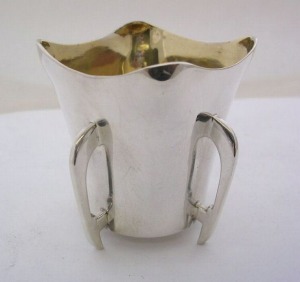
|
METHER CUPMether is a
drinking-vessel of
Celtic origin used in
Ireland to drink mead,
an alcoholic beverage
made of honey, water and
yeast.
|
"A BOOK ON MY SHELF"
In
this column we present books,
new or ancient, dealing with
silver in all its aspects
(history, marks, oddities...).
This isn't a "book review" but
only a fair presentation of some
useful "tools" that anyone may
have in the shelf of his
bookcase.
ASCAS members are invited to
contribute to this column
(click to enlarge images)
The "book on the shelf" of
this month is presented by Karin
Sixl-Daniell:
ADAM SILVER
1765-1795
Taplinger Publishing Co.
Inc. New York - 1965
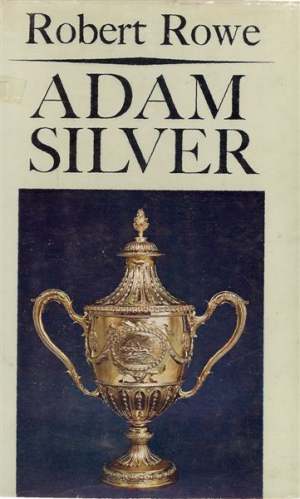 |
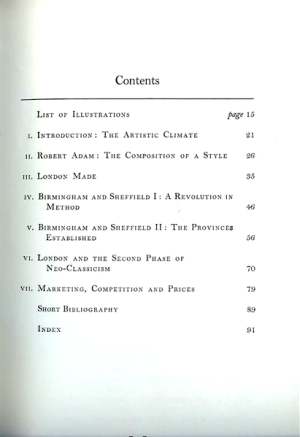 |
Closing our AUGUST 2008 edition of ASCAS Newsletter I hope you have appreciated its content.
Your comments, suggestions and advice will be of great help.
My thanks to Wulich Bronia, Jayne Dye, Sebastiano Gardoni, Christophe Ginter, Journe Y., Janjaap Luijt, Robert Massart, Dominique Mayeux, Lloyd Prator, Marcos Sartirana, Karin Sixl-Daniell, Svein Solhjell and JoAnne Wilkinson for their invaluable contributions.
Giorgio Busetto
Secretary
ASCAS is a community
of people having a
common interest in
antique silver.
|
|
|

